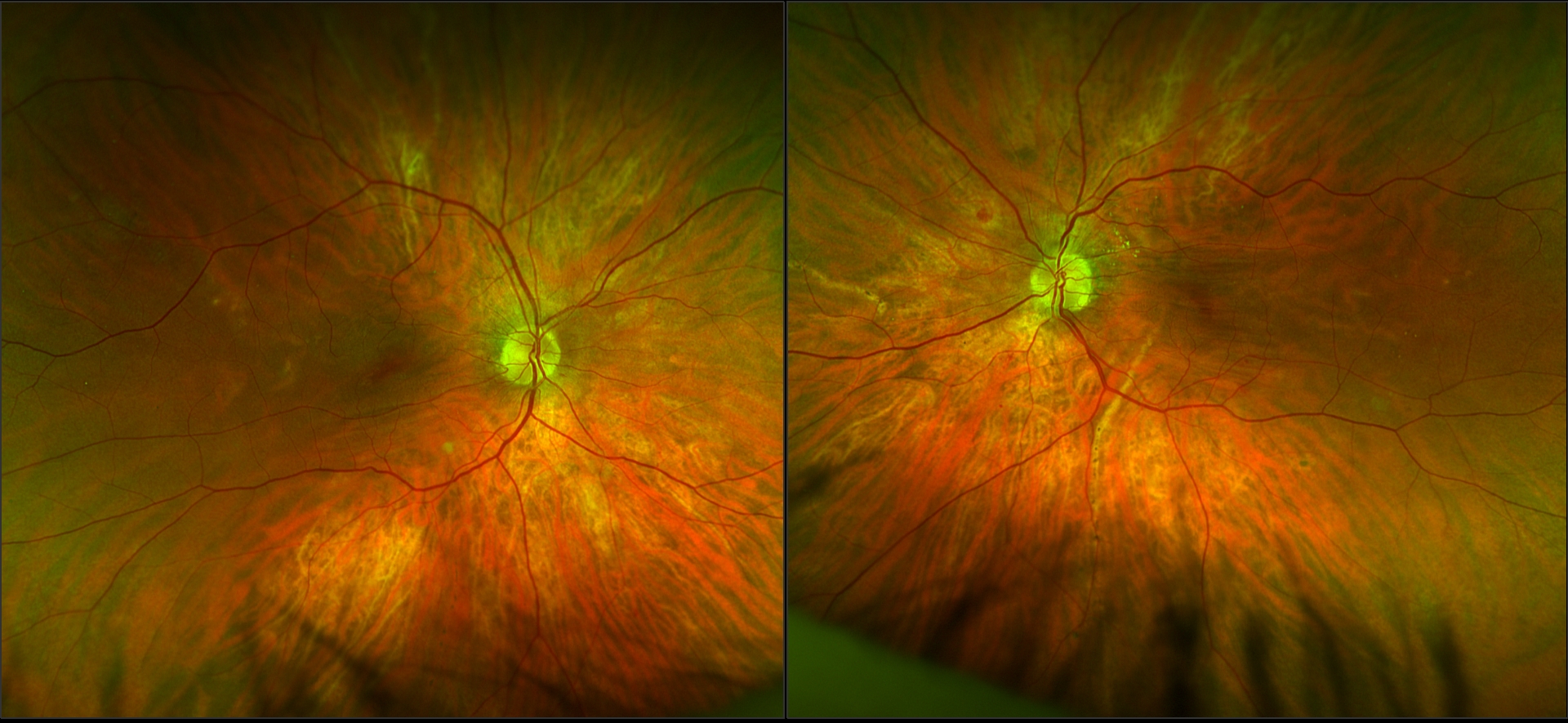W is a 53 year old gentleman who came in to see us for the first time because he has noticed that he is having more difficulty reading with his contact lenses lately. He reported that he was in excellent health but had not seen his primary care doctor in a few years. His near vision complaint is common among patients over the age of 50 due to a natural loss of elasticity in the lens of the eye. The loss of elasticity causes difficulty with focusing on closer objects and is known as “presbyopia”. Thankfully there are many options to help patients struggling with presbyopia which include multifocal contact lenses, reading glasses and progressive glasses to name a few.
The eye exam started as expected with all of W’s findings not too far off from a typical person in their early 50’s. When it came time to measure his prescription he could see the small letters far away which qualified him as having 20/20 visual acuity. What you learn with time as an eye doctor is that seeing 20/20 is not the full story. I could tell that something wasn’t exactly right because he was slow to read the letters and it did not come easy to him. The next thought is that he may have early onset cataracts which can degrade the quality of light entering the eye but he showed no signs of cataracts.
The next part of the exam was to evaluate the back of the eye and it was revealing.
I do not expect the non-eye doctor readers to appreciate the problem shown in the images of W’s retina but we are seeing multiple abnormalities. There is blood that is leaking from the blood vessels, there is lipid leaking from the blood vessels and there are signs of lack of oxygen to the retina of both eyes. There are multiple conditions that can cause these clinical findings, one of them being high blood pressure. W’s blood pressure was taken with an electronic unit and the screen displayed an “ERROR” message. I grabbed our manual blood pressure cuff and W’s blood pressure was in the range of 210/170. To put that in perspective, normal blood pressure is below 120/80. W’s blood pressure puts him in a state of “hypertensive crisis” which means that he is at a high risk for developing a serious stroke or heart attack at any moment. He was immediately referred to his physician for an evaluation and was told to go to the Emergency Room if he cannot get in to see his physician. As this happened within the hour I do not have an update but will share it with you as I learn more.
W is a prime example of why eye doctors recommend eye examinations and that screenings that only measure visual acuity are not enough. As W teaches us, eye examinations by a professional can identify much more than whether or not you need glasses. Sometimes, while rare, it can even be the difference between life and death.



